Master How To Hit A Golf Ball Straight For Beginners: Crush Your Game!
It’s a common challenge for beginners to improve their golf score and hit the ball straight. But don’t worry, you’re not alone in facing this issue. It’s important to understand that golf is not just about hitting the ball with power. Rather, it’s a game of precision and accuracy. To hit the ball straight, you need to learn the proper techniques for swinging and practice consistently.
So, my advice to you as a beginner is to focus on learning the tricks for swinging and practice diligently. With time and effort, you can improve your golf skills and hit the ball straight with more consistency.
Acquire the right golf swing form
A swing is a way you swing a golf club. Fundamentals are important in any sport. If you’re a beginner, start by learning the correct swing!
The key is the iron shot swing. Many people are worried that they can’t hit the ball straight in the beginning. If you put too much effort into it, you may end up hitting an OB or duff shot. Most iron shot mistakes occur due to addressing and swing errors. If you want to make a nice shot, remember the techniques to hit the ball straight with your head and body!
Related: Think Before Hitting The Ball: Key Difference Between Good And Bad Golfers
Tips for beginners on how to grip and position a basic golf club
Be careful if you’re a beginner as straining the hand holding the club can cause it to become unnaturally strong. Let me show you the proper way to hold and stand with a basic club (for right-handed golfers):
Start by gripping the club naturally with your left hand. Open your palm, place the club from the first joint of your index finger to the base of your little finger, and wrap your fingers around the grip. Then, gently grip the club with your right index finger and little finger, place your thumb on top, and wrap your left thumb around the base.
Finally, place your right pinky finger between your left index and middle finger, or intertwine your left index finger and your right pinky finger.
To achieve a sense of stability, squeeze the right and left hands together so that there is no space between them. Tighten your right side! To stabilize your lower body, stand with your feet slightly wider than shoulder width.
To maintain proper form, keep your back straight with the image of tilting your pelvis forward. A stooped back can compromise stability. Remember, the key to hitting the ball straight in golf is to keep your body straight. You can also check out more about the basics of the correct grip on the golf info guide.

Don’t tense up: swing with a relaxed motion
Swinging the club is often considered the most challenging part of golf. As a beginner, you have likely experienced this at least once. The key is to keep your eyes on the ball to ensure a straight flight. Try to create an “axis” like the center of a compass by minimizing the movement of your eyes and head position.
As you swing the club upward, twist your body and maintain focus on the ball. After completing your swing, turn your body forward from the lower body in the direction you want to hit the ball. Keep your eyes focused forward along your line of sight. Remember to practice regularly to build your confidence and technique.
Want to improve quickly? Prioritize core training and seek professional instruction
To improve your golf game, it’s crucial to have solid control rather than just focusing on flying distance. Even if you practice a lot of full swings, you may struggle to hit the ball straight. If you’re a beginner, I suggest starting with small swings to get a feel for the club. Focus on being symmetrical when swinging, such as from waist to waist (half swing) or shoulder to shoulder (three-quarter swing).
To identify and correct mistakes, it’s beneficial to take lessons from a professional instructor. They can teach you valuable techniques in a short amount of time, which is especially helpful if you’re pressed for time. In addition to lessons, training your core can also improve your golf performance. Golf relies more on core strength than arm strength, so exercises like sit-ups can be effective.
Have you mastered the art of hitting straight shots? Start with the proper grip, visualize hitting the ball straight, and keep practicing. With dedication and persistence, you’ll be able to achieve a nice shot. Moving forward, let’s take a closer look at the movement and check your form.
The fundamentals of the golf swing apply to both drivers and irons
The fundamental mechanics of the golf swing remain the same whether you’re using a driver or an iron. Although the club length and ball flight may differ, the approach to the swing remains consistent. It’s important to adhere to the core principles of the swing with any club you use.
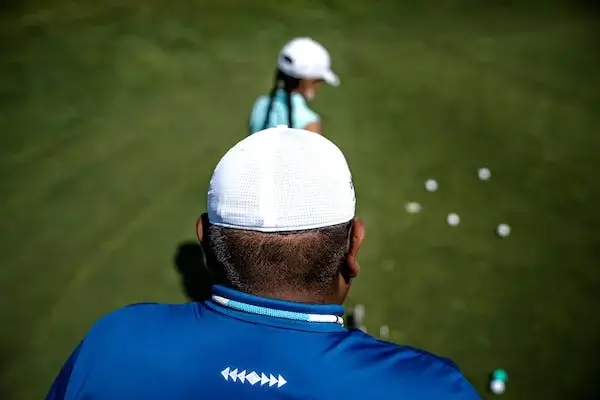
Golf swing techniques to try
A golf swing is a complex combination of different elements that are intertwined in various ways. Even if you closely examine many golfers’ swings, you will find that no two swings are exactly alike. However, there are certain key aspects of the swing that professional and advanced golfers tend to share.
To improve your own swing, it’s important to understand and practice these key elements. In the following sections, we’ll break down the swing into its component parts and provide tips and tricks for each stage.
How Golf Beginners Struggle with Hitting the Ball Straight
Let’s explore the reasons why beginner golfers struggle to hit the ball straight. One of the main factors is the inconsistency in their swing.
Despite trying to replicate the same swing, variations occur in details such as the club trajectory, head position, and weight transfer. Additionally, when a mistake is made, the golfer will try to adjust their swing to correct it, leading to further changes. As a result, beginners often struggle to achieve consistent shots.
Curving of the ball and misalignment of the launch direction
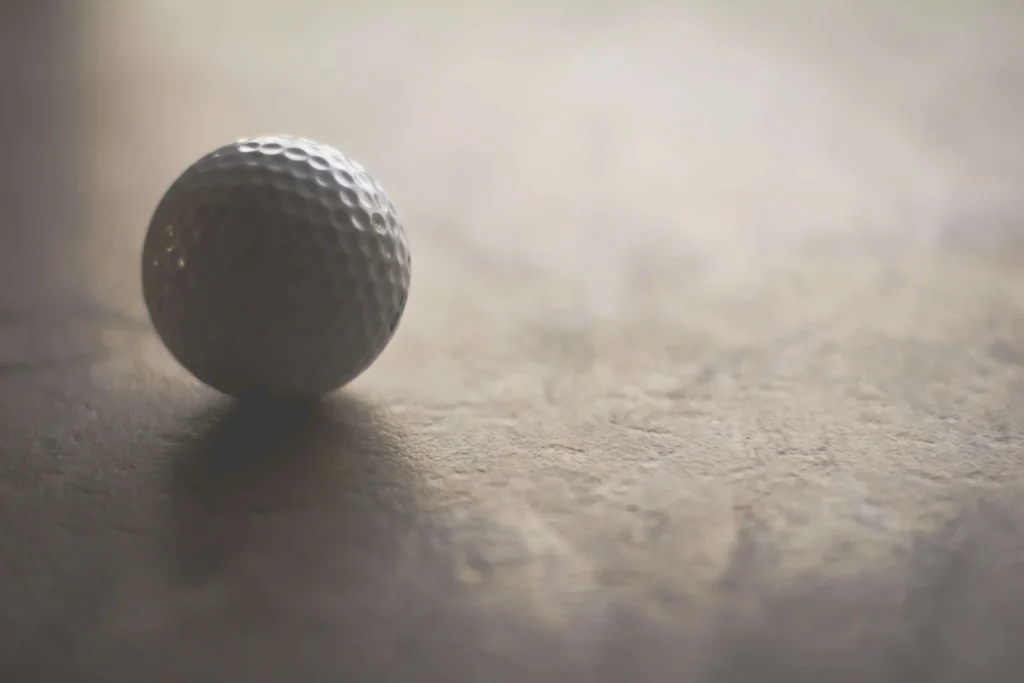
The curve of the ball and the difference between the intended direction and the actual ball flight can be frustrating for golfers. However, there are valid reasons why these issues occur. Both the ball curve and directional deviation have underlying reasons that can be understood by breaking down the mistakes step by step. By identifying the causes, golfers can work on correcting the curve and alignment issues.
Analyzing missed shots and understanding the reasons behind the ball’s curve and directional deviation can help golfers adjust their swing accordingly.
Minimize spin inclination when hitting a straight ball
The tilt of the axis of rotation is necessary for the ball to curve. A pure straight ball is when the axis of rotation is not tilted in either direction. When looking at a flying ball from behind, if the axis tilts to the left, the ball will curve to the left, and if it tilts to the right, the ball will curve to the right. The stronger the tilt of this axis of rotation, the greater the curvature.
Let’s take a look at a golfer’s ball that produces a strong slice, which is common among amateur golfers.
A slice occurs when the axis of rotation is tilted to the right. A person with a large tilt to the right will have a strong slice.
The ball curves to the left with an inside-out swing
To make the ball curve to the left (draw ball), the axis of rotation needs to be tilted to the right. This tilt can be achieved by hitting the ball with an inside-out swing path relative to the line of flight.
Related: How Far Should a Beginner Hit a Golf Ball?
Curving the ball to the right with an outside-in swing path
To achieve a fade shot that curves to the right, the axis of rotation must be tilted to the left. This requires an impact head trajectory that is outside-in relative to the direction of the flight line.
How to Achieve a Perfectly Straight Golf Ball
Have you ever thought about hitting a straight ball every time in golf? If you can hit a straight ball every time, it can definitely improve your score! We know that both the draw and fade shots are produced due to the tilt of the rotation axis. But a perfectly straight ball should not have any tilt in either direction.
Unfortunately, as humans, our bodies are not always able to move like a robot, so there can be slight tilts in the rotation axis that cause the ball to deviate from a straight line. In other words, even if you aim for a straight ball, you may still end up with a shot that curves left or right, making it difficult to use in a round of golf.
Mastering a ball with a draw or fade rather than aiming for a straight ball
Instead of investing time in learning how to hit a straight ball, it’s more effective to focus on mastering either a draw or a fade. This is because even if the axis of rotation is tilted slightly, such as 1 or 5 degrees, the ball will still curve in the same direction as long as the axis is not tilted in the opposite direction. This gives you more room for error compared to hitting a straight ball, which requires more precision.
If you’re a beginner in golf, you may notice some players practicing to hit straight shots. However, it’s better to choose either a draw or fade and work on perfecting it. This way, you’ll improve faster and have a consistent shot shape that you can rely on during a game.
It doesn’t matter which way you curve the ball. Learn to control the bend and use it as a weapon. Let’s compare the advantages of a draw versus a fade. In conclusion, both have pros and cons, so it’s fine to curve the ball in either direction.
If the course has bends that follow the direction of your ball, you can confidently aim your shot according to the curvature of the course. Furthermore, being able to control the number of curves to some extent can be a powerful tool.
Mastering Clubface Control: The Key to Directional Accuracy
I have discussed the bending of the ball so far, but what about the direction of the ball? The direction of the ball is determined by the face direction at impact. If the face closes at impact, the ball goes left, and if it opens at impact, it goes right.
The correlation with the bending of the ball is important, and it depends on how the impact is made in the direction of the flight line. If the head trajectory is straight with respect to the flight line direction, the ball that hits the close will fly left and then turn left. However, if the head trajectory is closed in the direction of the flight line, even if the ball is closed and impacted, it may become a faded ball. The result is determined by the head trajectory and the angle of the face.
What this means is that, for example, if the head trajectory is 4 degrees outside-in to the line, and the face is 2 degrees closed to the line, then it is 2 degrees open to the head trajectory. This results in a fade ball that is launched to the left and curves to the right.
Half shots can help align your clubface
To achieve a consistent shot direction, it’s crucial to align the clubface at impact. Half shots can be helpful practice for achieving a straight clubface position. During half-shot practice, focus on keeping the clubface straight. You can also try hitting the ball on an inside-out or outside-in trajectory, but be careful not to produce a hook or slice.
Repeating these exercises can improve your shot power significantly.
Understanding the basics of golf swing
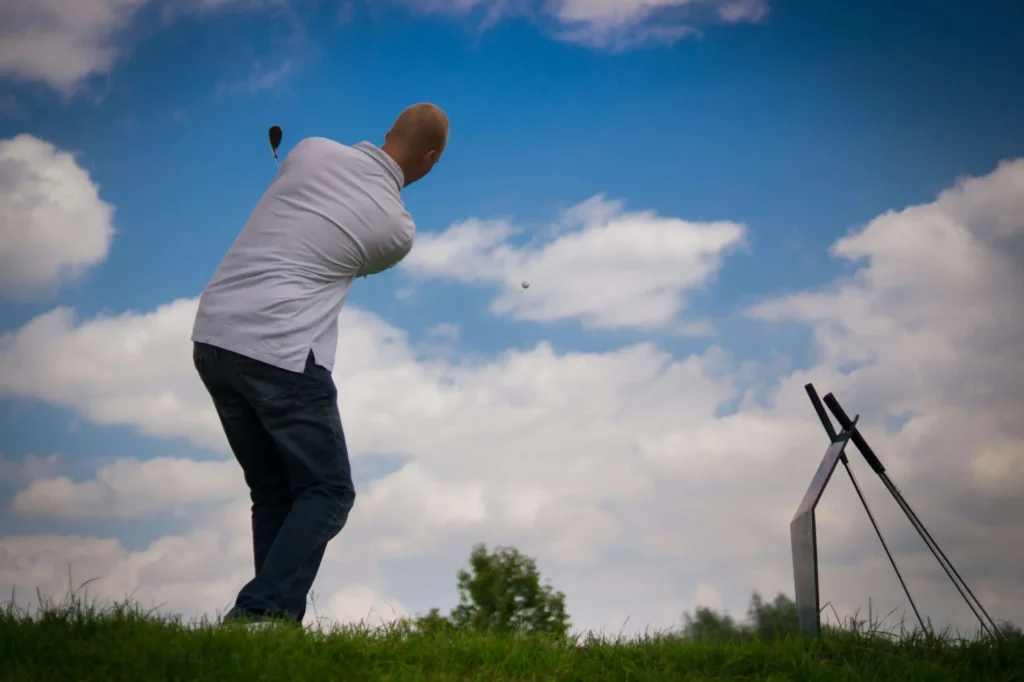
Basics Of The Golf Swing
Before you hit the ball, it’s essential to understand the fundamental mechanisms of ball flight, such as ball bending and directionality. Now, let’s review the basics of the golf swing.
There are different types of golf swings depending on your physique and swing style. However, there are some essential points to keep in mind, regardless of your swing style.
What are the basics of the golf swing
Address
Without a solid address, your swing will go wrong. Let’s go over the basic address format.
First, align the clubface in the direction you want to hit the ball. Next, hold the grip with your hands ahead of the clubhead, which is known as a hands-first grip.
To achieve a hands-first grip, position the club in the center of your body and tilt the grip towards your left hip joint. Keep the grip loose to avoid applying too much force, which can disrupt your swing.
Grip
A hook grip, also known as a strong grip, is currently the most common grip style. Pay attention to the back of your left hand, which should show two to two and a half fists when viewed from the front.
For the right hand, position the wrinkles of the thumb and index finger towards your right shoulder. While there are other grip styles, the strong grip is the most adjustable to various clubs.
Swing Basics: Just swing!
Once you have the correct address and grip, it’s time to swing. However, understanding the concept of swing is crucial before hitting the ball. One crucial consideration is the ball’s position. The farther back you place the ball, the higher the ball will fly, and vice versa. Remember that irons are down blows, while drivers are up blows.
The swing doesn’t change based on the ball or club position. The only thing that changes is the ball’s position relative to your stance. To maintain a consistent swing, forget about hitting from above or below and focus on a stable swing.
Take back
Once you have the correct address, take the club back. Since the swing rotates around the axis of the body, it tends to pull towards the backside. However, in many cases, it pulls too much on the backside, causing the swing to be disturbed and resulting in missed shots.
The trick is to consciously pull the club straight back from 20 cm to 30 cm from the address. If you try to raise the club with your hands, it will disturb the take-back. Therefore, use your largest muscles and twist your upper body to take it back.
Tighten your abdominal muscles and try to take the club back while keeping the grip end facing your navel. Face the ball when taking the club back. There is another caveat when taking the club back – don’t open the face side. During the take-back, imagine that the clubface has “eyes” and is staring at the ball.
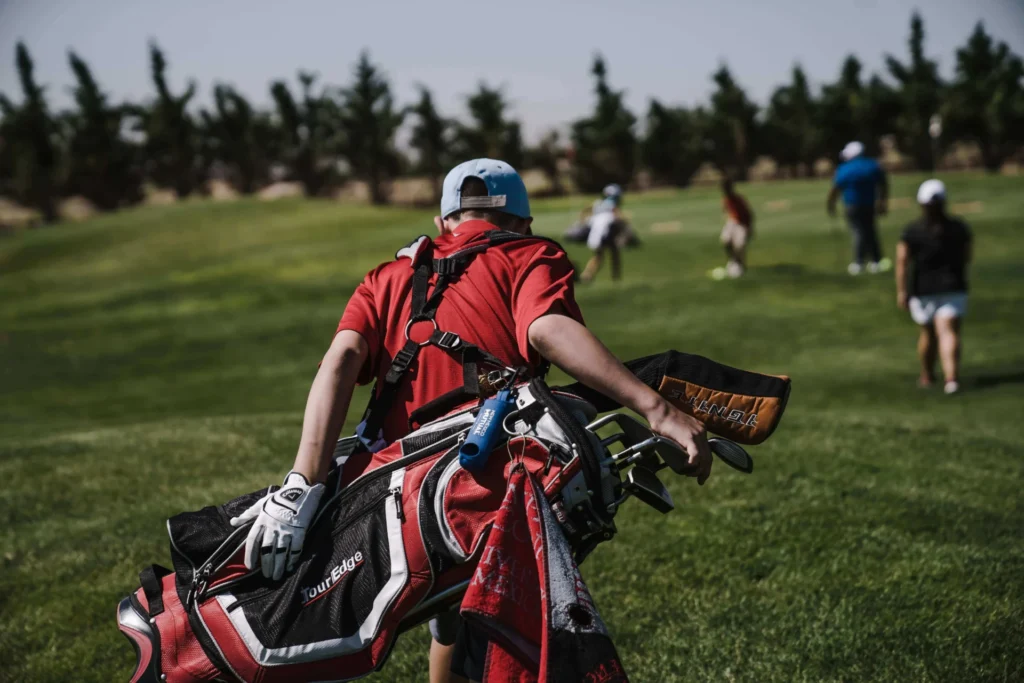
Once you open the clubface, you will need to return it to the proper position before impact, and this opening and closing motion can cause instability in the clubface and result in the ball curving and the launch direction being inconsistent.
Keeping the clubface facing the ball during the take-back minimizes the opening and closing of the clubface. Keep your right elbow close to your body during the take-back. Also, pay attention to your right elbow during the take-back. Raise the club with your right elbow touching your body. In the middle of the take-back, the right elbow naturally leaves the body. The timing when this right elbow leaves the body is until the left arm becomes parallel to the ground.
After that, the right elbow moves away from the body toward the top. Be careful not to bend your left elbow from the take-back to the top. It works well if you are conscious that your left shoulder acts as a fulcrum for the club.
The right elbow at this time is away from the body, but the orientation is crucial. Move your right elbow towards the ground. Many amateur golfers have their elbows facing their back, which leaves a large space in the armpit. This causes the left wrist to bend towards the instep and the club to point to the right of the ball line. Make sure your right elbow is pointing downwards, as both of these actions reduce the accuracy of your swing.
Top
Now let’s consider the top of the swing. At the top, be aware that the club’s shaft should be facing the line of flight. When viewed from the rear, the shaft should be pointing straight ahead or slightly to the left (called laid-off).
Related: Hard or Soft Golf Balls For Beginners: What to Choose?
Shape of wrist
Next, consider the shape of your wrist. The shape of the left wrist is important, and it must not bend towards the instep at the top. Your arms and wrists should be straight or flexed on the palm side (called palmar flexion).
When making the shape of the top, it is not only the hands that are important. Use your body to twist backward. If you try to make the top with only your hands, they will move dexterously and you will make mistakes easily. Using your large body muscles, you can make a top with high reproducibility.
Downswing
We will now discuss the action of turning back when entering the downswing from the top. Firstly, before executing this crosscut, the knees and hips begin to move in order to shift weight. Once in the top position, a lot of weight is on the right foot, but the weight shift has already started before the cut.
As for this weight transfer, it is transferred from the right foot to the left foot, but if you swing with this image, many people will end up thrusting their body forward, so be careful.
Keep your weight on your right foot and step forward with your left foot.
Stepswing
A step swing is recommended to grasp the timing of turning back. Timing is the key to turning back. If it is too early, it will be rushed, and if it is too late, there are cases where a large slice comes out due to a delay in swinging.
The best way to find the right timing is to actually swing while feeling the weight shift.To grasp the timing of the cutback, let’s do a step swing.
You can also practice swinging, making it a versatile practice drill in your backyard, for warming up at the practice range, and for adjusting before the round.
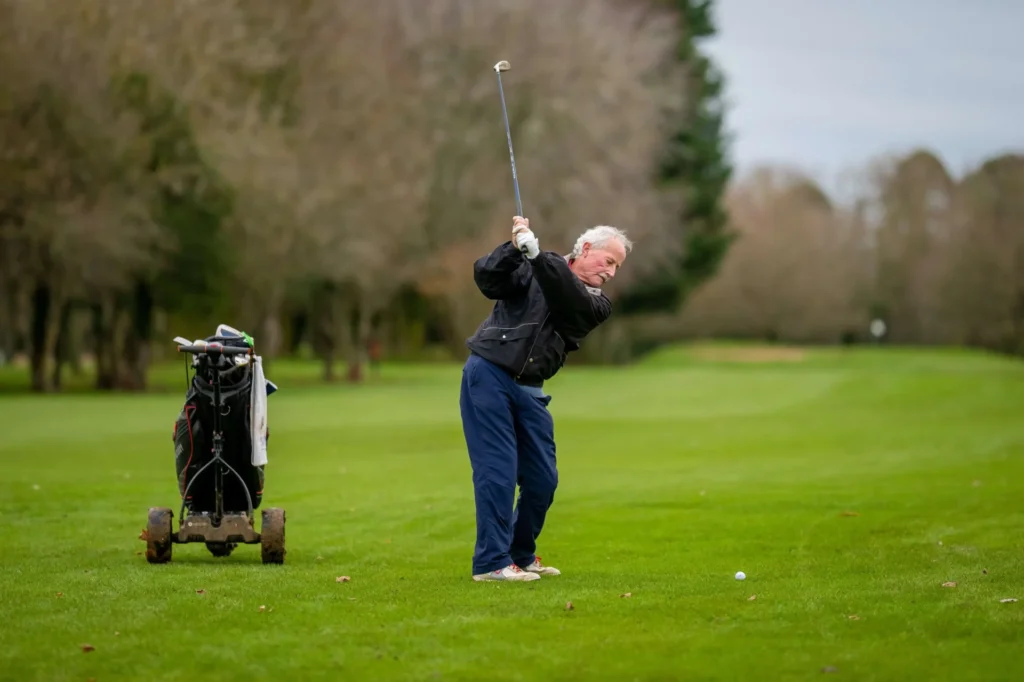
Moving on to the downswing, when you turn back at the right time, you will be able to swing powerfully.
I would like to give a word of caution about the downswing. In the downswing, it is important to release the twisted waist and upper body and return it. Swing with your body, not your arms. This is a body turn-driven swing.
When entering the downswing, if the hand is in the correct top position, the hand will naturally come down first. So-called “downswing with Tame” can be done. The point to be careful about in the downswing is not to rush.
It is strictly forbidden to hit in the downswing. I understand the desire to hit the ball! “I want to hit the ball!”
However, if the desire to hit the ball is too strong, the body will plunge into the ball. If you push your body into the swing, the swing will be disturbed, making it easier to make mistakes.
To prevent this thrusting, it is good to imagine swinging with your weight on your right hip joint. The image of shifting your weight to the left may cause a thrust, so it’s okay to be conscious of stepping on your left foot.
Moving on to the impact of hitting the ball, be aware that the head should move straight around 20 centimeters in front of and behind the ball. If you want to distinguish between draw and fade, try adjusting the head trajectory to inside-out for draws and outside-in for fades.
The point to be careful about at impact is to remove as much force as possible. If you force it, the head speed will not increase and the reproducibility of the swing will also decrease. The flight distance will not come out, and the shot will not be stable. Weakness is the key when you want to make a stable shot.
Also, pay attention to your body axis at impact. It’s okay to think that the forward-leaning posture created by address doesn’t change with downswing, impact, or follow. The area around this impact is where the most force is applied, making it easier to lift the upper body. If you get up here, the head will shift as much as the body gets up.
You will not be able to secure the stability of your swing, so be sure to keep your forward-leaning posture at the address. Moving on to the follow-up after impact, the movement around the impact and the image of the follow-up are likely to be directly connected. Pay attention to them.
A swing faithful to the basics is recommended for flying straight!

If you want to hit the ball straight, the shape of your swing’s basics is crucial. The “basic” swing is crucial for flying straight. Each golfer’s swing is unique, but common points should be followed to some extent. Repetition is key to hitting the target to some extent by making a swing faithful to the basics. However, hitting a straight ball can be difficult. Try creating a swing that hits the target straight and carries it with a draw or fade.
Closing
As we come to the end of this discussion on how to hit a golf ball straight for beginners, it is important to remember that golf is a game that requires patience, practice, and perseverance. It takes time and effort to master the necessary skills, but by adopting the correct techniques and attitude, you can enhance your game.
It is important to begin with the fundamentals such as your grip, stance, and alignment, and then gradually work on improving your swing technique by focusing on the backswing and downswing. Be mindful of the contact between the clubface and the ball to achieve better accuracy.
In addition, keep in mind the psychological aspect of the game. Stay attentive and self-assured, and don’t allow mistakes or unfavorable shots to demotivate you. Cultivate a positive mindset and continuously strive to refine your skills.






